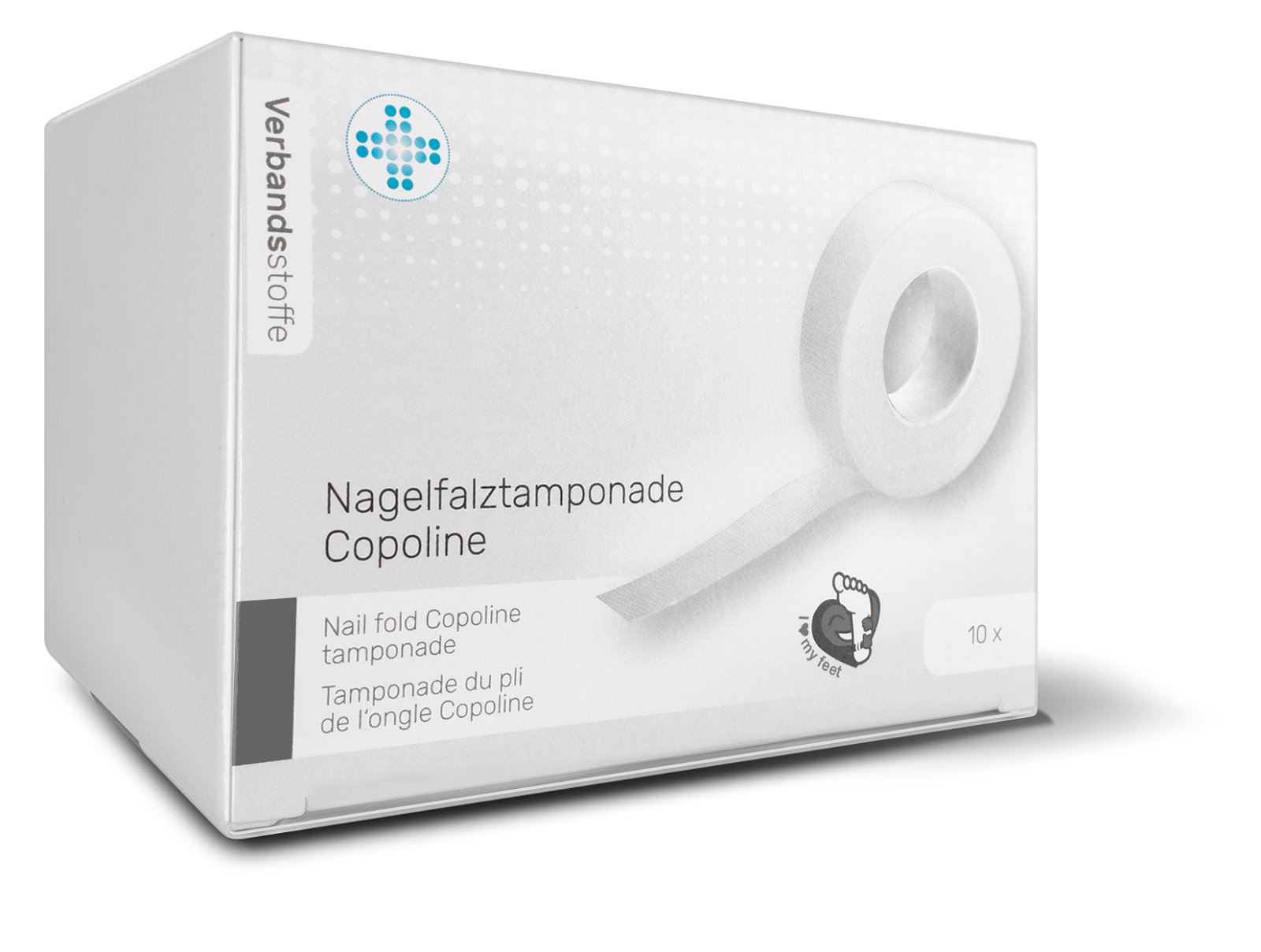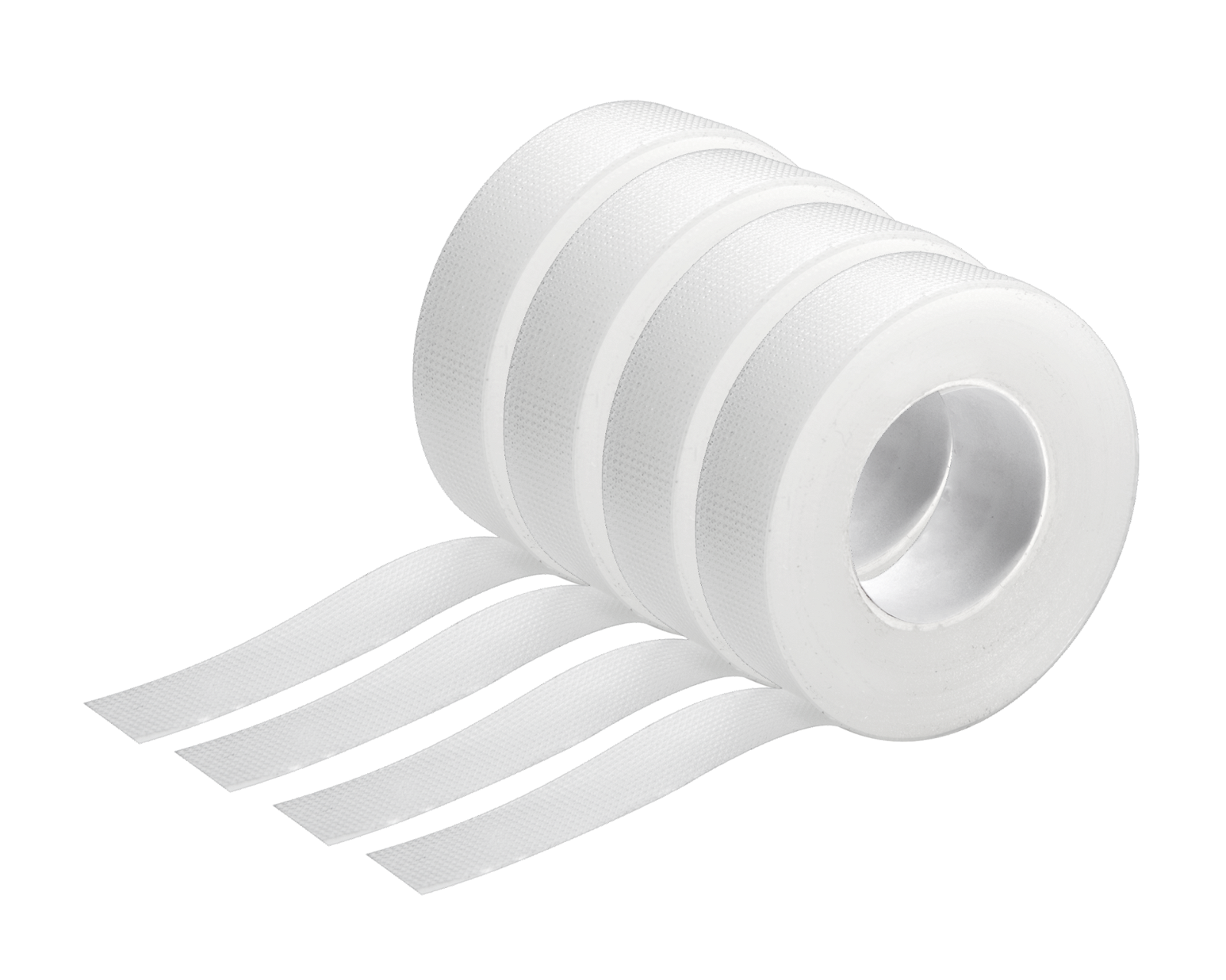Tamponades
RUCK tamponades: For reliable wound care and haemostasis
Whether for wound care, effective haemostasis or protection when working in problem areas - tamponades are part of the basic equipment in podiatry and chiropody. In our RUCK product range, we offer high-quality tamponade bandages and nail fold bandages for professional wound management and the best treatment results.
What are tamponades?
Tamponades belong to the extensive group of bandages. They are primarily used to stop bleeding, treat wounds, disinfect wounds along with protecting sensitive treatment areas. After operations, they are also used to fill artificially created or natural body cavities or openings.
How do tamponades work?
The basic function of tamponades in wound care is to absorb blood, wound fluid or other secretions thanks to absorbent materials. They also serve to keep the wound open in order to help the internal tissue heal. Sterile tamponades, which are particularly soaked in an antiseptic solution, are also used to prevent infection and disinfect wounds. In podiatry, nail fold tamponades play an important role in nail correction systems using nail braces to treat ingrown nails or roll nails.
What are the main functions of tamponades?
Depending on their design, tamponades can fulfil various functions in podiatry and chiropody. The most common forms of application include:
- Treatment of wounds:In classic wound care, tamponades made of absorbent cotton wool play a particularly important role in the treatment of abrasions or minor cuts. However, depending on the size of the wound, products made of gauze are also used for large wounds or foam for more severe bleeding.
- Stopping bleeding:Wound tamponades are used to stop bleeding and are therefore part of the basic equipment for wound management or surgical functions. If the filler is to be applied to the wound, then there are variants with adhesive. Versions with haemostatic agents can be found to promote blood clotting in the case of large wounds or bleeding.
- Disinfecting and cleaning wounds: To clean and disinfect wounds, sterile tamponades are provided with an antiseptic that kills microorganisms.
- Keeping wounds open: Should it be necessary to observe the development of infection in wounds, then wounds are tamponaded to keep them open for one to two days. This ensures that the internal tissue regenerates without infection.
- Treating ingrown nails: In podiatry, strips of fleece are pushed between the nail and nail wall as nail fold tamponades to prevent further ingrowth. This means the nail can grow out cleanly.
What are tamponades made of?
Depending on the area of application and requirements, fillers made of different materials should be selected. Common materials include:
- Gauze: Is mostly contacted for wound tamponades, as it is an absorbent, firm material.
- Cotton wool: Cotton wool tamponades are usually cotton balls or gynaecological tampons made from viscose or cotton. The cotton wool core reliably absorbs liquids and secretions. Gynaecological tamponades also have a return thread and a special cover made of gauze or tubular bandage to hold the cotton wool together. In podiatry, tamponade cotton is also used to prevent further ingrowth of nails into the nail fold.
- Non-woven fabric: Nail fold tamponades made of non-woven fabric are used to protect sensitive functions or if corrective braces have to be used on the foot.
- Foam: Foam tamponades are preferably used in the shape of nasal tamponades. They are made of thermostable foam and a coating that prevents sticking or adhesion and guarantees pain-free removal. They also have a tear-resistant retraction thread.
Buy tamponades and tamponade bandages from RUCK
In our RUCK product range, you will find tamponades for professional application in podiatry and chiropody. These include nail tamponades especially for sensitive working on the nail fold along with tamponade bandages for wound care.






















































